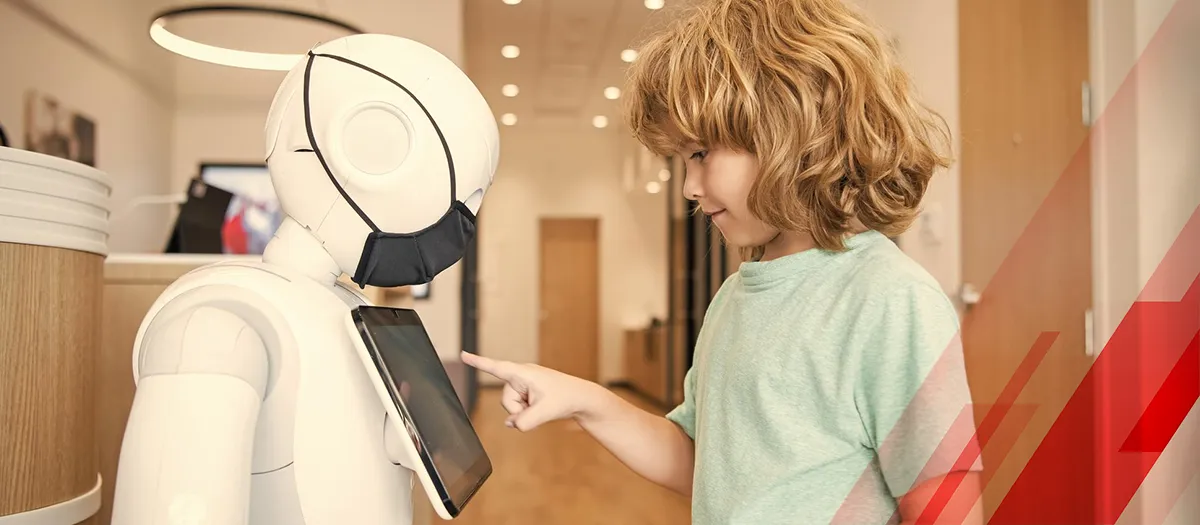Imagine being in two places at once, effortlessly bridging the gap between physical distance and virtual presence. That's exactly what telepresence robots offer—a revolutionary way of connecting and interacting with others from anywhere in the world. these robots are transforming the way we engage with others.
Now, let's get started and learn deeply about these innovative robots.
Understanding the Concept of a Telepresence Robot
A telepresence robot is a computer, smartphone, or tablet-controlled robot that allows users to have a virtual presence at a remote location. It combines video, audio, and mobility features to provide a sense of being physically present in a place. These robots typically include a screen, video camera, speakers, and microphones, enabling users to see and hear what the robot is hearing and seeing. In contrast, others can see and hear the operator. According to Kings Research, the telepresence robot market will likely reach $411.0 million in revenue by 2030. This statistic shows the potential growth of this market in the forthcoming years.
How Does a Telepresence Robot Work?
A telepresence robot operates by combining advanced technology with remote control capabilities. The robot consists of a mobile base equipped with wheels or tracks for movement, a screen, a camera, speakers, and microphones. The user remotely controls the robot using a computer, tablet, or smartphone, connecting to the robot over the internet.
The robot's camera captures real-time video and audio that are transmitted to the user's device. Simultaneously, the user's audio and video feeds are transmitted to the robot, allowing better communication. The robot helps the user interact with others and experience a sense of physical presence in the remote location through the robot's eyes and ears.
What Does a Telepresence Robot Offer?
These robots offer a wide range of benefits. Some key advantages include:
- They allow individuals to participate in meetings or events remotely, reducing the need for travel and associated expenses.
- These robots enable people with mobility limitations to attend work, school, or social gatherings, fostering inclusivity and equal opportunities.
- With these robots, healthcare professionals can remotely assess patients, provide consultations, and offer medical guidance, improving access to healthcare in remote areas.
- They enhance educational experiences by enabling remote students to actively participate in classroom discussions and collaborative projects.
- These robots facilitate virtual tours, allowing individuals to explore museums, landmarks, and other cultural sites from the comfort of their own homes.
- By using telepresence robots, businesses can expand their reach and serve clients or customers in different geographic locations without the need for a physical presence.
- They allow remote workers to have a physical presence in the office, facilitating better collaboration and communication with colleagues.
- These robots can be used in disaster response situations, enabling experts to remotely assess the situation, guide rescue operations, and provide real-time support to those in need.
How is the Telepresence Robot Redefining Patient Care?
Telepresence robots play a crucial role in healthcare by enabling remote patient care, virtual consultations, and improved access to healthcare services. These robots allow healthcare professionals to remotely monitor patients, conduct virtual rounds, and provide medical expertise from a distance. They enhance patient engagement and education by facilitating interactions between patients, healthcare providers, and support networks. They also contribute to patient well-being by reducing feelings of isolation and loneliness through virtual social interactions.
One innovative robot model used in healthcare is the Sanbot Elf telepresence robot. This robot provides a physical, remote presence, allowing users to visit family members, co-workers, hospital patients, and others instantly and efficiently. The Sanbot Elf telepresence robot aims to enhance patient care, improve access to healthcare services, and provide a sense of presence for remote users in healthcare settings.
3 Major Telepresence Robot Models in 2024
Below are the three major models of robots used for telepresence that you must consider in 2024.
1. Double Robotics: Double 3
Double 3 is a fully integrated robot that uses 3D sensors to understand its environment and navigate obstacles. This self-driving, two-wheeled videoconferencing robot is designed for remote work and learning. It allows users to click anywhere on the floor, and the robot will navigate there, avoiding obstacles along the way. It features an ultra-wide field of view, multiple levels of zoom, and mixed reality capabilities.
2. OhmniLabs: Ohmni
The Ohmni, a virtual telepresence robot, allows users to connect and interact from various locations, providing an immersive experience with real-time navigation, 4K resolution, and a fully emotive neck. It features a 4K camera, a 10.1" HD IPS touchscreen, fast HD video streaming, a 15W speaker, a custom quad-microphone array, an Ohmni glide drive, and a charging dock. The robot is designed and built in the USA using 3D-printed manufacturing with eco-friendly materials. These robots are designed for use in offices, factories, warehouses, universities, hospitals, and stores.
3. Ava Robotics: Ava
Ava is a slick telepresence robot that offers dynamic features and a seamless user interface. The robot is equipped with sophisticated sensors and autonomous navigation capabilities. It has the ability to map and navigate its environment without human intervention. The goal of Ava Robotics is to provide a practical teleportation experience and transform remote work and site visits. This robot can be used in various settings, including healthcare, business meetings, and even weddings.
In a Nutshell
Telepresence robots have revolutionized the way we connect and interact in various industries. These robots have bridged geographical barriers, providing remote access to businesses and enabling virtual meetings and communications with clients.
In healthcare, these robots have enhanced patient care by facilitating remote monitoring, improving patient engagement, and reducing healthcare costs. As technology continues to advance, we can expect telepresence robots to play an even greater role in transforming knowledge, improving communication, and bringing us closer together, regardless of physical distance.




